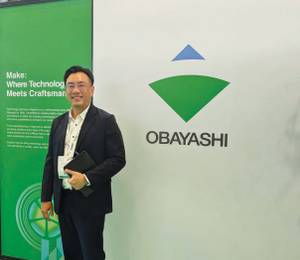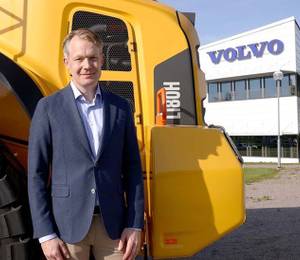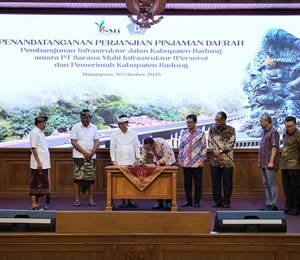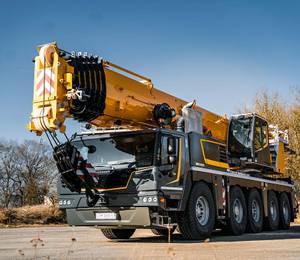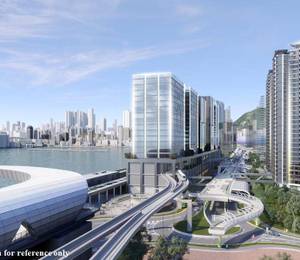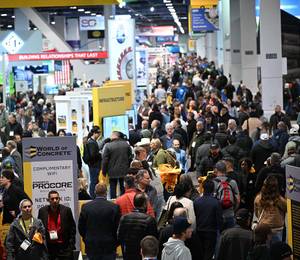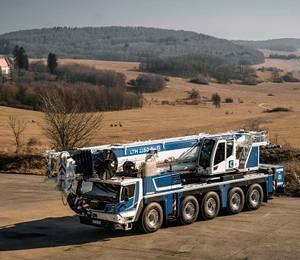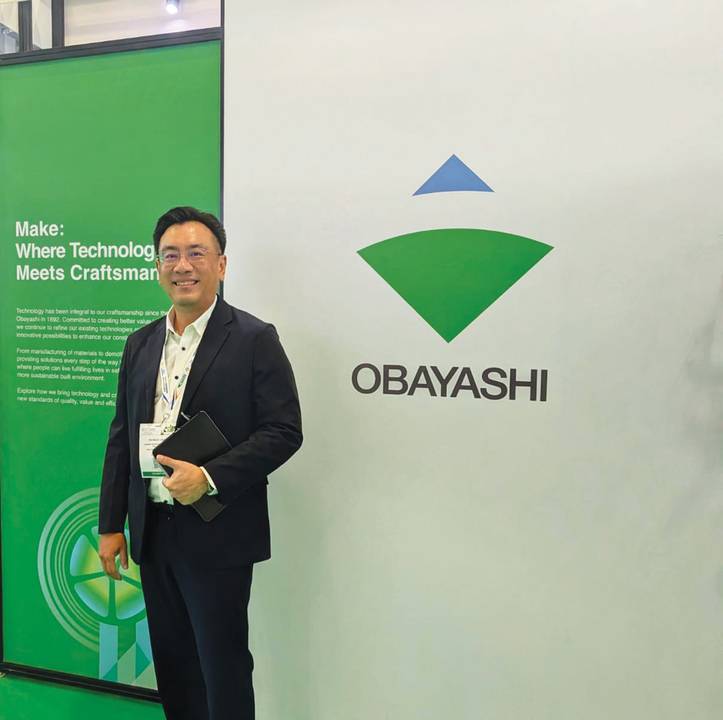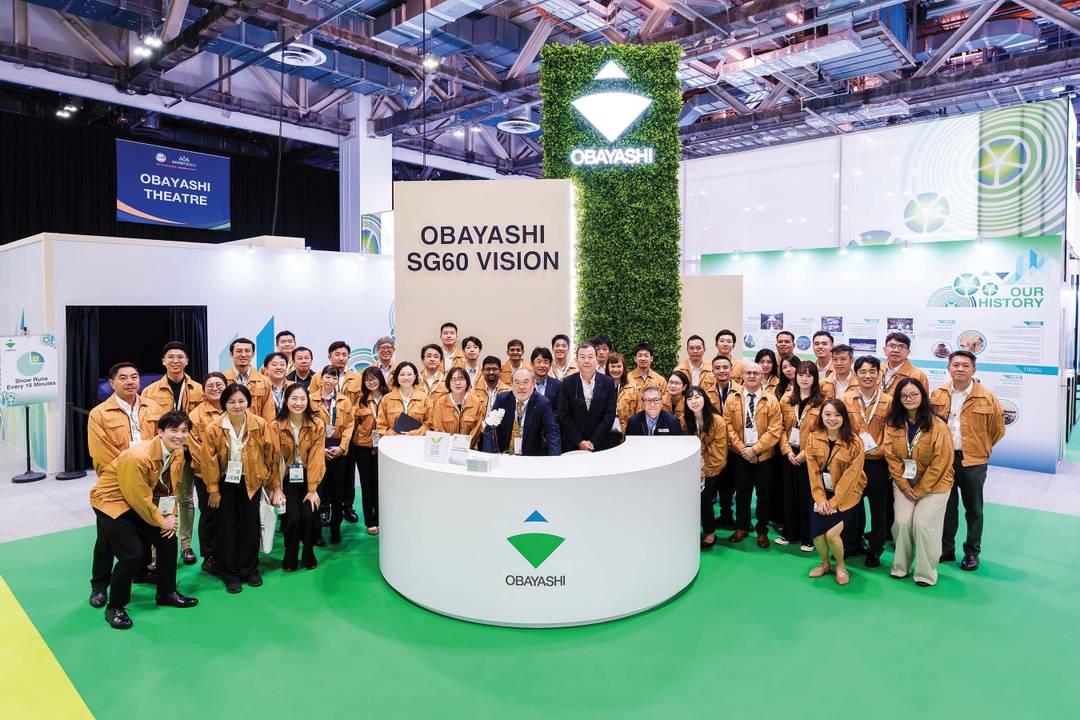With the construction industry facing increasing challenges in today’s fast-paced environment, Southeast Asia Construction (SEAC) met with Obayashi Singapore, one of the country’s leading contractors, to find out about new methods, materials and technologies that will shape the future of worksites.
Singapore celebrates its 60th birthday this year, and so does Obayashi Singapore. The Japanese company opened its local office in 1965, and since then, it has been involved in building some of the country’s most iconic landmarks – from Jewel Changi and Mandai Bird Paradise to the upcoming New Science Centre.
At the recent International Built Environment Week (IBEW) and BEX Asia 2025, Obayashi unveiled a bold new chapter for the next decades of construction, driven by advanced robotics and automation, climate-positive materials, and remote-controlled technology.
‘Overcoming challenges is crucial’
“Singapore’s construction industry will face several significant challenges moving forward. One of the primary concerns is sustainability; the industry must innovate to reduce carbon emissions, adopt green building practices and meet stricter environmental regulations,” explained Patrick Chia, director at Obayashi Singapore, in an interview with SEAC during BEX Asia.
“Climate resilience also poses a challenge, requiring infrastructure that can withstand extreme weather conditions and rising sea levels. Additionally, ageing workforce and manpower shortage remain critical issues. The industry needs to invest in automation, upskilling and attracting younger talent to maintain productivity and quality.
“Technological integration, such as building information modelling (BIM) and smart construction techniques, is essential but requires significant investment and adoption. Lastly, managing costs amidst rising material and labour prices while maintaining safety and quality standards will be an ongoing balancing act. Overcoming these challenges will be crucial for a sustainable and resilient future of the industry in Singapore.”
Mr Chia shared the similar traits between Japan and Singapore – which will provide a conducive environment for Japanese construction innovations to be developed and adapted to Singapore’s local setting.
Both markets “emphasise the adoption of advanced construction technologies such as BIM, modular construction and prefabrication to improve efficiency and reduce costs. The two countries also prioritise sustainable development, incorporating eco-friendly materials, energy-efficient designs, and green building standards like LEED and BCA Green Mark.”
“Moreover, rapid urban growth drives significant infrastructure projects in both countries, including high-rise buildings, transportation networks and smart city initiatives,” added Mr Chia.
“Another similarity is that strict building codes, safety regulations and quality assurance practices are integral to project planning and execution in these countries. Plus, they both invest in training and developing a highly skilled construction workforce to meet the demands of modern urban projects in the light of an increasing ageing population.”
Game-changing technologies
One of the latest innovations at BEX Asia was a remote-controlled excavator, showcased as part of ‘Obayashi SG60 Vision’ exhibition. The company presented a live demo of the technology, operated in real-time from BCA Academy Braddell Campus.
Mr Chia highlighted numerous advantages of employing this technology, which can help tackle some of the industry’s biggest challenges. “Obayashi’s system can be fitted into most modern excavators, making it a universal system that is easily adaptable and deployable,” he said. “Once the system is set up, the operation is similar to a traditional excavator, therefore the training and adoption rate can be very high. It can also be adapted to different types of machines, such as dozers or wheel loaders.
“The system enhances safety by using additional cameras and sensors, which improves the visibility and situational awareness of operators. Compared to autonomous systems which require additional safety clearance from relevant authorities, this remote-controlled system is in line with Singapore’s safety regulations.”
“The system is best deployed in harsh and dangerous conditions so that the human operators can be isolated from on-site safety hazards,” continued Mr Chia. “On top of that, the remote-controlled system can be installed anywhere with connectivity – this allows for better working conditions for the operators as well as centralisation. We foresee future potential to centralise operators so that we can optimise the human resource that is becoming scarce.”
In Japan, Obayashi has deployed its remote-controlled machines on various projects. The company also plans to trial this technology in Singapore.
“After 60 years, Singapore has come to a stage where many of its buildings need to be demolished. This is when a remote-controlled machine should step in, as the operator can carry out the demolition work safely from a distance,” said Mr Chia.
Separately, Obayashi has deployed its autonomous tower crane and machine guided crawler crane on HDB’s Construction Transformation Project in Tengah. These solutions aim to increase productivity, improve safety and reduce reliance on manpower.
AI is being used in the autonomous tower crane integrated with Skyjuster. This will enable HDB to build flats faster and safely, compared to traditional construction methods. The crawler crane is equipped with GNSS, LiDAR and boom sensors to improve safety on the jobsite.
Furthermore, Obayashi has introduced its 3D printing technology in Singapore. This advanced method allows for more expressive designs in construction, enhances safety and construction quality, minimises labour requirements, and shortens the project schedule.
According to Obayashi, unlike traditional methods which can take days to produce and are limited to only a few structural shapes, the 3D printer’s flexible control over the thickness of layered materials produces previously challenging designs – instantly.
“We are proud to share that we are one of the first companies in Singapore to have developed and commercialised our 3D printing technology,” said Mr Chia. “Coupled with our in-house structural design, BCA has approved our 3D printing technology and design to be used for a structural element. This will be showcased at our Tengah project in collaboration with HDB.”
For the Tengah project, Obayashi is creating a 3D-printed Botanic Arbor – a self-supporting, flowing structure that blends smoothly with the surrounding greenery. It is scheduled to be completed later this year. Mr Chia expects it to become “the first 3D-printed structural element in Singapore.”
In Japan, Obayashi has employed its 3D printing technology to create outdoor benches, a ticket booth, precast components for installation underwater, and a 3dpod building.
Mr Chia pointed out that “if we want to use technology, we must grow with technology. We believe that technology must be shared, because ultimately, we will not only upgrade ourselves but the entire industry.”
Greening construction sites
On green construction materials, Obayashi has developed Clean-Crete (low-carbon concrete). It replaces most of the cement with industrial by-products that generate less CO2 (e.g. ground granulated blast furnace slag and fly ash), reducing CO2 emissions by up to 80% compared to ordinary concrete.
Clean-Crete has been adopted in approximately 120 building and civil engineering projects across Japan, with a cumulative placement volume of about 443,000 cu m and an estimated CO2 emissions reduction of roughly 100,000 t, shared Obayashi.
The product has the same workability as ordinary concrete and meets the same construction standards and regulations. “It is fully mature in Japan. We will be working with Singapore’s authorities, testing labs and universities to certify its use in the local market,” said Mr Chia.
Clean-Crete N is an advanced version of Clean-Crete that makes achieving carbon negativity during production possible. Carbon emissions can be reduced by up to 120% approximately.
In addition, Obayashi is piloting the use of green steel in collaboration with Lendlease at the Comcentre redevelopment project.
On construction sites, all of Obayashi’s projects deploy battery energy storage systems (BESS) to power heavy equipment such as tower cranes and passenger hoists. “Overall savings in fossil fuel is more than 60%,” revealed Mr Chia. “This is currently a more feasible solution compared to electric-powered machines that have not been tested in the field.”
When it comes to electric machines, “it is important for us to consider the whole process – where do we get the power from, what happens to the batteries at the end of their service life, etc. – before deciding to go ahead with it.”
Mr Chia added that Obayashi will also be piloting the use of green hydrogen fuel cells to replace fossil fuel generators in one of its projects at New Science Centre. “This will further reduce our carbon footprint as part of our commitment to sustainability.”
The importance of collaboration
As a leading contractor in Singapore, Obayashi plays a key role in supporting its local partners in their digital and sustainability journey. For example, the company organises study trips overseas (e.g. Japan) for its partners to “witness the benefits of embracing technology beyond what’s existing in Singapore,” shared Mr Chia.
“We utilise common platforms such as Autodesk and Glodon consistently across all projects so that our subcontractors can invest in technology with assurance of continuity. We also incorporate them into our subcontracts, in order to create a level playing field for all subcontractors who tender for Obayashi’s projects.”
In recent years, the Singapore government has been encouraging the adoption of collaborative contracting in delivering construction projects, both in public and private sectors. Such an approach allows the project owner and its main partners (architects, consultants and contractors) to cooperate closely towards common goals. Obayashi sees this effort as a positive change that will benefit the industry.
“Collaborative contracting fosters transparency and early involvement of all stakeholders, enabling better planning, risk management and cost control,” explained Mr Chia. “It is also building trust and open communication channels with clients, consultants and suppliers, leading to smoother project execution and problem-solving. Early collaboration helps identify potential conflicts or scope changes upfront, minimising disputes, claims and rework during construction.
“In addition, coordinated workflows and sharing of real-time information create efficiencies, shorten project timelines and optimise resource utilisation. Collaborative environments further encourage innovative solutions, sustainable practices and value engineering that benefit all parties. What’s more, successful collaborative projects can lay the foundation for repeat business and stronger relationships with clients and partners.”
Mr Chia emphasised, however, that collaborative contracting will only work “when all partners can bring value to the table. Every party should contribute and help to de-risk the project.”
Attracting the next generation
With the shortage of skilled professionals in construction, Obayashi has been investing in making the industry a dynamic and rewarding choice for the young generation.
The company offers scholarships, internships, mentorship programmes and management skills training. “Our HR performance appraisal system ensures clear growth pathways. We have been nominated as Employer of the Year by the SPH for both 2024 and 2025,” said Mr Chia.
“We have to attract young people to rejuvenate the industry,” he stressed. “For the past 10 years, the average age of our workforce has decreased from about 50 to 24-25 now. A lot of our programmes are currently designed to attract young people into the company. From there, we try to retain their interests with technology like BIM, robotics, AI.”
Obayashi is moving away from the traditional methods of construction. The introduction of its remote-controlled machines at BEX Asia is part of this initiative. Mr Chia described the transformation as “gamification of technology”, which enables young professionals to work on “real-world projects remotely yet competently. We need to make the job more fun for them.”
To Obayashi, there are three key factors that determine the company’s success: people, leadership and technology. “It starts with people, then leadership,” affirmed Mr Chia. “With these two, you are able to decide on the technology you want to implement.”
He reiterated, “Once we have the right people, we can work together to take the company forward.”
Note: This story has also been published in the Nov/Dec 2025 issue of SEAC (with more images). Click here to read it online or here to download the PDF file (pages 30-33).
